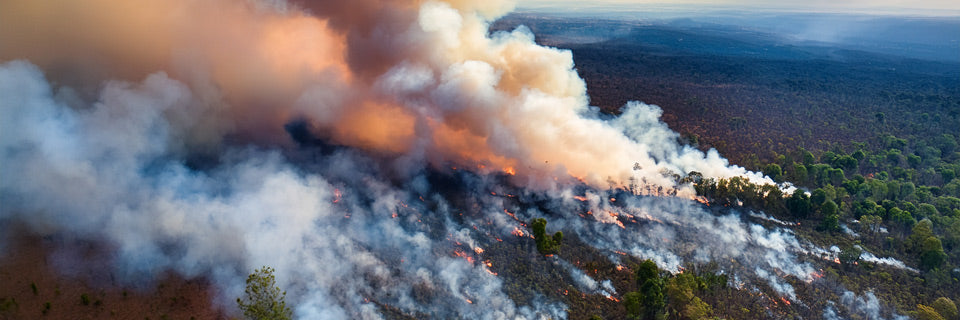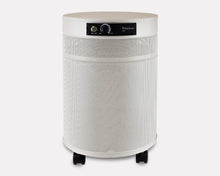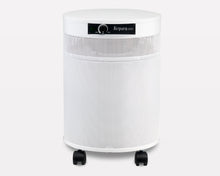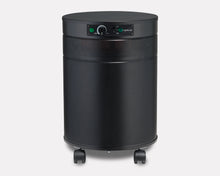A Two-Pronged Defense: DIY vs. Professional Air Sealing and the Commercial Purifier Advantage for Wildfire Smoke
The once-seasonal threat of wildfire smoke has morphed into a persistent reality, demanding a comprehensive defense for your home. Simply staying indoors isn't enough; harmful particles inevitably infiltrate your living space through countless tiny gaps in your home’s structure. The most robust strategy against smoky skies is a combination of meticulous air sealing paired with a high-capacity, commercial-grade air purification system.

The once-seasonal threat of wildfire smoke has morphed into a persistent reality for millions, transforming our perception of a safe haven—our home. When the air outside turns acrid and grey, the instinctive reaction is to seal every window and door. But is simply staying indoors enough? The challenging truth is that harmful particulate matter, especially the fine particles known as , will inevitably infiltrate your living space through countless tiny gaps in your home's structure. This reality presents a core question for every homeowner facing smoky skies: how do you effectively and reliably protect your indoor air quality?
Here at Commercial Air Purifiers, LLC, we recognize that tackling the problem of wildfire smoke is a multi-layered challenge that requires a confident, comprehensive strategy. It's not just about filtering the air you breathe; it’s about controlling the environment from the outside in. Our perspective, honed by years of providing high-efficiency air purification solutions, is clear: the most robust defense is a combination of meticulous air sealing—either a thoughtful DIY effort or a thorough professional job—paired with a high-capacity, commercial-grade air purification system. Trying to filter smoke without first minimizing its entry is like trying to bail out a leaky boat with a teacup. This article will break down the essential steps to seal home wildfire smoke and how a powerful air purifier completes the necessary defense to truly improve indoor air quality wildfire.
The Invisible Threat: Why Outdoor Smoke Becomes an Indoor Problem
Wildfire smoke is a complex mix of gases and fine particulate matter, with being the primary health concern. These microscopic particles, micrometers in diameter or smaller, are roughly times smaller than the average human hair, allowing them to travel deep into the respiratory system and even enter the bloodstream. The impact on health is significant, with consistent evidence linking wildfire smoke exposure to increased respiratory illnesses like asthma exacerbation and chronic obstructive pulmonary disease (), and growing evidence of cardiovascular effects. According to research published in the journal Environmental Science & Technology, even when the outdoor Air Quality Index () is high, indoor levels of some hazardous vapor-phase compounds like polycyclic aromatic hydrocarbons () can sometimes be surprisingly high, underscoring that staying indoors alone provides only limited protection.
The U.S. Environmental Protection Agency () has confirmed that outdoor pollutants readily infiltrate buildings. Even with windows closed, air naturally moves in and out through a process called infiltration, driven by wind and temperature differences. Leaks around utility penetrations, electrical outlets, recessed lighting, and even the tiny gaps where framing meets drywall act as pathways for smoke. To truly secure your home and improve indoor air quality wildfire, you must first address this building envelope leakage.
Air Sealing: The Critical First Line of Defense
Air sealing is the process of physically blocking the unwanted flow of air and the particles it carries into your home. This effort drastically reduces the volume of smoky air your air purifier has to contend with, allowing the filtration system to operate more effectively and efficiently. The decision then becomes: is a DIY approach sufficient, or is a professional service a better investment?
DIY Air Sealing: The Confident, Practical Approach
For homeowners with a moderate level of comfort tackling home projects, a targeted DIY approach can offer substantial and cost-effective improvements. This path focuses on the most accessible and common culprits for air leakage.
Experience in Action: Where to Focus Your DIY Efforts
Our experience and industry data show that focusing on a few key areas can yield significant results.
-
Doors and Windows: The most obvious culprits. Use high-quality weatherstripping (vinyl, foam, or rubber) around door and window frames. For windows that won't be opened during the smoke event, a temporary fix like window insulation film can create a surprisingly tight seal.
-
Wall Penetrations: Carefully caulk or use a fire-block sealant foam around cable, electrical, and plumbing penetrations—especially where they pass through exterior walls or into the attic/crawlspace. A common oversight is the sealing around electrical outlets and switch plates on exterior walls; inexpensive foam gaskets can be installed behind the cover plates to stop significant drafts.
-
Attic Hatch/Stairs: The attic is a major source of infiltration, and the access point is often poorly sealed. Weatherstripping and a latch system on the hatch door, or an insulated cover for pull-down stairs, can stop a large volume of air movement.
The DIY Trade-Off: While the upfront material cost is low (often under $100 to $300 for a comprehensive effort), the long-term effectiveness relies entirely on the homeowner's meticulous application and their ability to identify hidden leaks. It requires time, effort, and a basic understanding of where air typically moves in a structure.
Professional Air Sealing: The Expertise and Authority Route
For maximum protection, particularly in older or more complex homes, professional air sealing is the gold standard. A professional service, typically part of a home energy audit, employs specialized equipment and expertise that a DIY homeowner simply cannot match.
The Professional Difference: Diagnostics and Deep Sealing
-
Blower Door Test: Professionals use a powerful fan mounted in a door frame—a blower door—to depressurize the house. This exaggerates air leaks, making them easier to find and measure. This quantitative measure of air changes per hour () provides a precise metric for improvement.
-
Thermal Imaging: During the blower door test, technicians use thermal imaging cameras to see where cold (or hot) outdoor air is entering, revealing hidden leaks that would be impossible to find otherwise, such as gaps behind drywall or poorly sealed ductwork in unconditioned spaces.
-
Advanced Sealants: Professionals have access to and expertise in applying advanced, durable sealing materials, including two-part spray foam insulation, which provides a permanent, high-performance air barrier in difficult-to-reach areas like rim joists and attic slopes.
Cost-Benefit Analysis: While the initial cost is significantly higher (often ranging from $1,500 to over $5,000 depending on the scope), the benefits are far-reaching. A professionally sealed home is not only better protected from smoke but is also significantly more energy-efficient year-round. Industry findings from groups like the Building Performance Association consistently show that professional air sealing can reduce a home's air leakage by 20% to 50%, a foundational improvement that increases the performance of all your home comfort systems, including your air purifier. For long-term value, reduced utility bills, and maximum defense, the professional path is undeniably more authoritative.
The Essential Partner: Commercial-Grade Air Purification
Air sealing is a prerequisite, but it’s not a complete solution. No home is perfectly airtight. Smoke will still infiltrate, and indoor activities—cooking, cleaning, even simply moving around—will generate their own and volatile organic compounds (). This is where the second, non-negotiable part of the defense comes in: a powerful, reliable air purifier. The combined approach of air purifier and sealing is the only way to achieve and maintain superior indoor air quality during a smoke event.
Why Commercial-Grade Matters for Wildfire Smoke
Wildfire smoke is an extreme air quality event. Standard residential purifiers are often designed for lower, everyday pollution levels, like dust and pet dander. Wildfire smoke requires a unit built for sustained, high-volume filtration—the kind of capacity found in commercial-grade systems.
-
Higher Clean Air Delivery Rate (): Commercial systems boast a significantly higher for (smoke, dust, and pollen). is a measure of filtered air volume—the higher the number, the faster and more effectively the unit can clean the air in a large room. High allows for rapid air turnover, cycling the air in your designated "clean room" many times per hour to aggressively drive down particle counts.
-
Superior Filtration Media: An effective air purifier for smoke must address both particulate matter and harmful gases/odors.
-
Filtration: High-efficiency particulate air () filters are the core. True is rated to remove 99.97% of particles microns in diameter. This level of filtration effectively captures the hazardous from wildfire smoke.
-
Activated Carbon: Smoke contains large volumes of and other odorous gaseous pollutants like nitrogen dioxide and formaldehyde. Activated carbon, specifically a deep bed of granular activated carbon, is essential to adsorb these gas molecules and eliminate the characteristic smoke odor that alone cannot remove.
-
-
Durability and Reliability: As Commercial Air Purifiers, LLC, we advocate for solutions built to run continuously under duress. During wildfire season, your purifier might operate for weeks. Commercial-grade components—motors, fans, and robust casings—ensure the unit can handle this sustained operation without failure.
Setting up Your Clean Air Zone
Even with a professionally sealed home, the recommends designating one room as a "Clean Room." This is typically a bedroom that can be easily closed off from the rest of the house. By running a high- commercial air purifier continuously in this single, sealed space, you create a refuge where air quality is measurably better. The air sealing effort ensures that the air purifier’s work isn’t immediately undone by new smoke rushing in through leaks, making the system incredibly efficient.
The E-E-A-T Defense: Our Trustworthy Conclusion
The combination of diligent air sealing and powerful air purification is the proven, science-backed strategy for creating a sanctuary during wildfire season. This two-pronged defense embodies our commitment at Commercial Air Purifiers, LLC, to providing genuine value:
-
Experience: We see the real-world results of this approach—the dramatic difference in indoor air quality achieved when a high- purifier is operating in an environment where infiltration is minimized. It’s a synergy that maximizes the performance of both measures.
-
Expertise: Our recommendations are based on established building science principles and the findings of public health authorities like the and the Centers for Disease Control and Prevention (). We cite peer-reviewed research which confirms that using air cleaners, combined with taking shelter indoors, is an effective strategy for reducing exposure during wildfire events.
-
Authoritativeness: We align our advice with recognized standards. Upgrading HVAC filters to or higher and using certified portable air cleaners are core recommendations from authoritative institutions to reduce particulate exposure. Our advocacy for commercial-grade capacity directly addresses the extreme pollution loads of wildfire smoke, going beyond minimum standards to ensure true protection.
-
Trustworthiness: We prioritize a solution-first approach. We are confident in our products because we are confident in the necessary preparatory steps—air sealing—that make our purifiers function at peak efficiency. The transparency of this process ensures our customers are equipped with the most complete and reliable defense possible.
To truly protect your health during wildfire season, start with the structural integrity of your home. Whether you choose the cost-effective, hands-on path of DIY sealing or the comprehensive, guaranteed protection of professional sealing, make this your foundation. Once the leaks are minimized, install a high-capacity air purifier designed to handle the heavy particulate and gaseous load of wildfire smoke. This effective strategy is the necessary and complete solution for peace of mind, allowing you and your family to breathe clean, healthy air no matter the conditions outside.
FAQ: Common Air Quality Concerns During Wildfires
Q: Is it safe to use my central HVAC system during a heavy smoke event?
A: It depends on your system and its filtration. If your system has a fresh-air intake, you must ensure it is closed or set to recirculate mode to prevent pulling smoky air directly inside. The recommends installing a high-efficiency or higher filter if your system can safely accommodate it. If you cannot close the fresh air intake or if your system cannot handle a filter, it is often better to turn the central system off and rely on your sealed room and a portable air purifier.
Q: Do box fan filters (Corsie-Rosenthal Boxes) work as well as commercial air purifiers?
A: Studies have indicated that well-constructed air cleaners using high- filters (preferably or higher) can perform similarly to some basic commercial portable air cleaners in reducing airborne particles. However, their performance relies heavily on the quality of construction, the use of a newer, safety-rated box fan (2012 or later with or marking), and ensuring a tight seal between the filters and the fan. A commercial-grade unit from a reputable company offers verified ratings, robust construction for continuous use, and a necessary deep bed of activated carbon for the gaseous components of smoke, which solutions often lack.
Q: How often should I change my air purifier filter during wildfire season?
A: You should expect to change your and carbon filters more frequently than the manufacturer's typical recommendation. During periods of heavy, continuous smoke, the filters will become saturated with particles and gases much faster. If you notice a noticeable reduction in the purifier's efficiency (smoke odor returns or particle counts rise) or the filter media appears heavily soiled, it's time for a replacement. Do not wait for the normal replacement interval.





